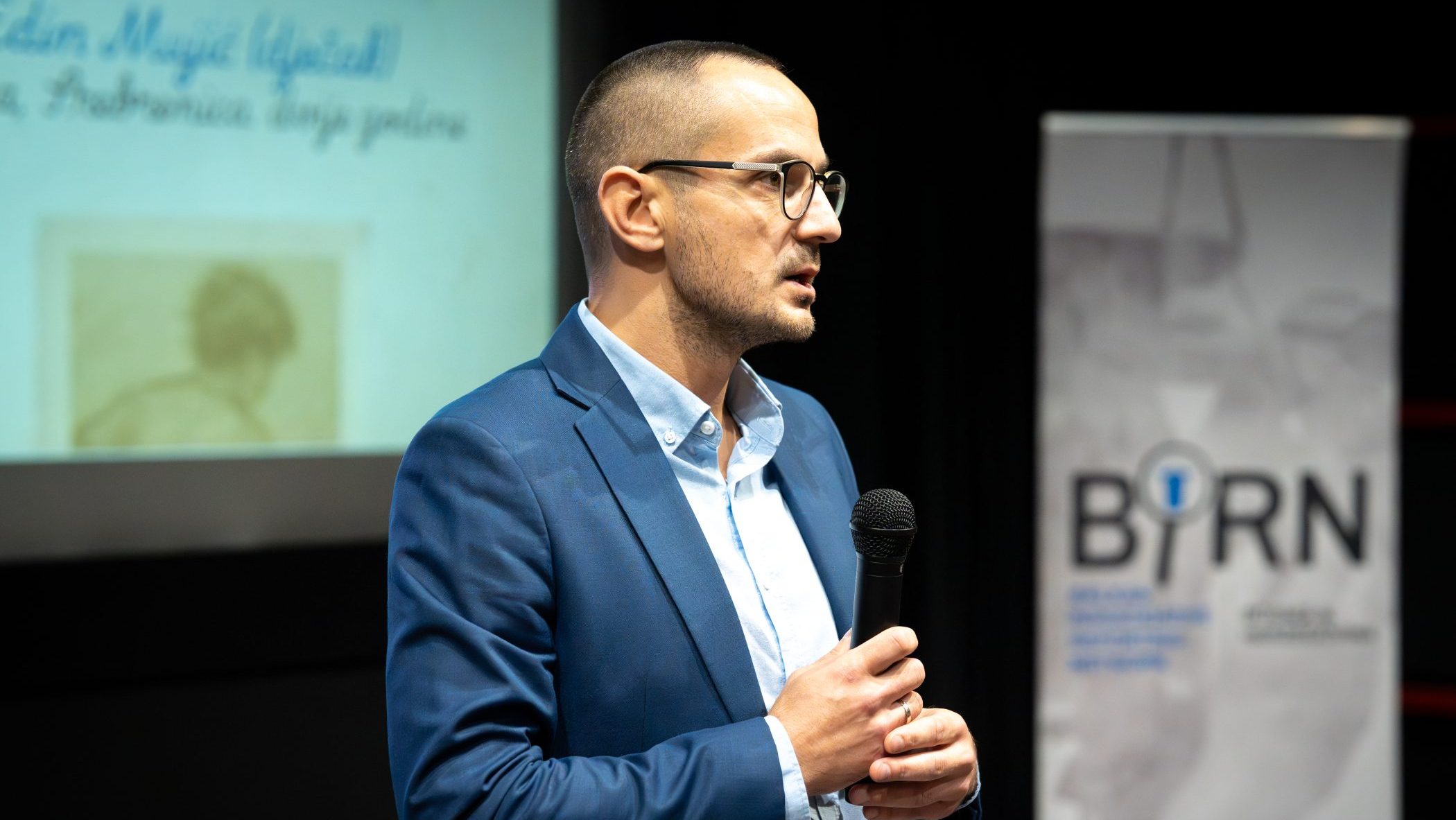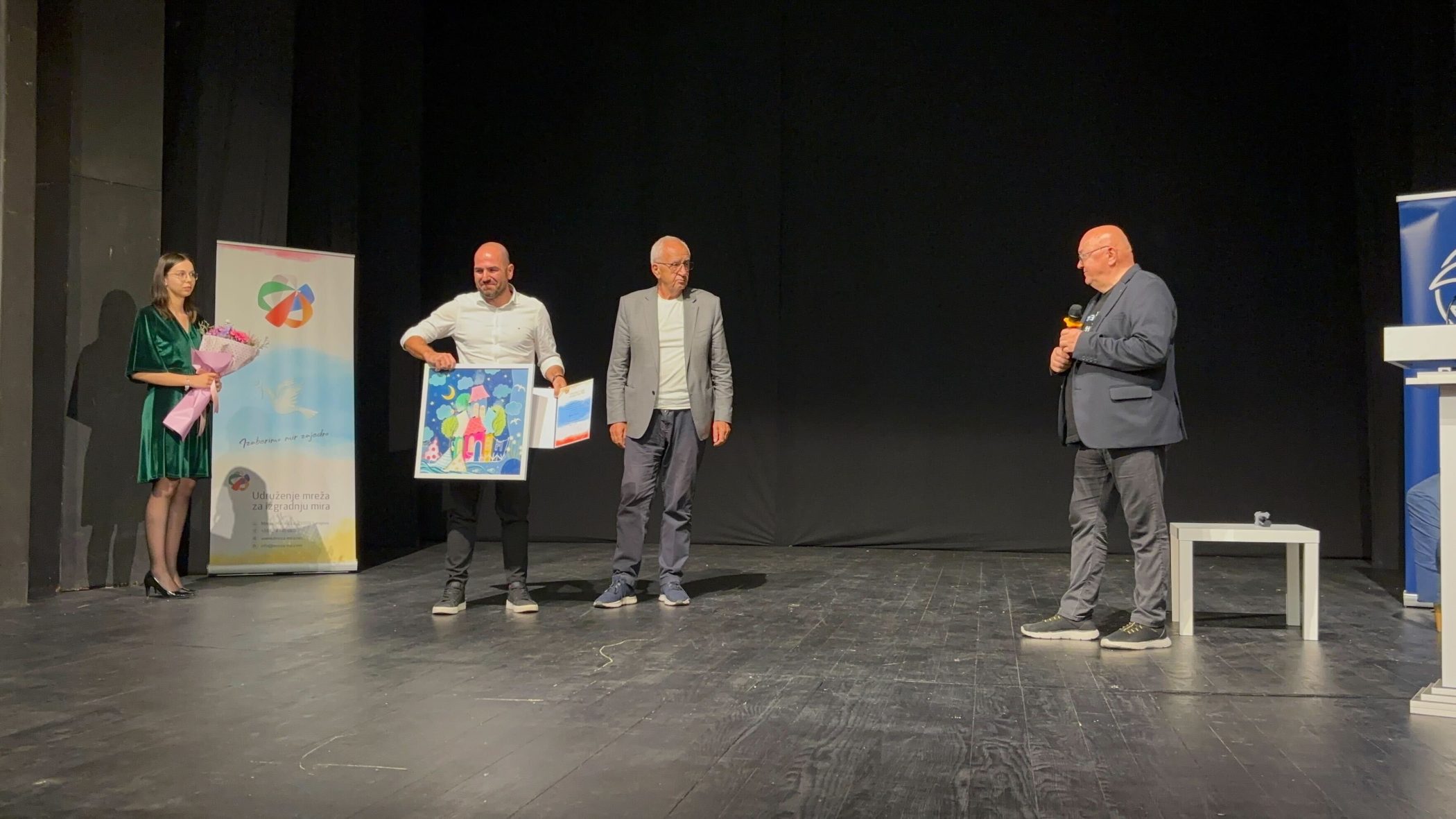This post is also available in: Bosnian
Bosko Pejulic, former commander of the 22nd Brigade with the Republika Srpska Army, VRS, which was based in the “broad area of Vlasic plateau”, told the Court that, in July 1992 he received an order indicating that “convoys of civilians from Krajina” would cross the area on their way to Travnik and that they would be guarded by civilian police.
Pejulic said that on August 21, 1992 he “reported” to his superiors in Banja Luka, adding that he came back to the Staff in Knezevo at “about 8 p.m.”, when the duty officer told him that “a big crime against people was committed at Koricanske stijene”.
The State Prosecution charges Damir Ivankovic, Zoran Babic, Gordan Djuric, Milorad Radakovic, Milorad Skrbic, Ljubisa Cetic, Dusan Jankovic and Zeljko Stojnic, as members of the Public Safety Station in Prijedor and the Emergency Interventions Police Squad from Prijedor, with having participated, on August 21, 1992, in escorting a convoy of Bosniak and Croat civilians and separating and shooting about 200 of them on Mount Vlasic.
“I decided to go to the crime scene right away, although it was dark. Upon my arrival at the location, I saw bloodstains by the road. I could smell blood and urine coming from the abyss. I did not hear anything. The atmosphere was creepy,” Pejulic said.
This witness explained that, on his return to Knezevo, he made a report on this and submitted it to “the first Krajina Corps of the VRS and Safety Services Center in Banja Luka, who were responsible for the convoy”.
“Nobody could sleep that night. At dawn I took the reconnaissance squad to that location in order to search for survivors. When I got there I saw a horrible image. I could not have imagined something like that happening. Corpses were lying at the bottom of two abysses. There were more corpses in the first abyss, maybe about one hundred, while there were about 50 in the other one,” Pejulic said.
The witness said the Reconnaissance Squad took six survivors out of the abysses and took them to the Brigade’s clinic. After that they were transferred to a hospital in Banja Luka.
“As the military did not have anything to do with the crime, I did not want to participate in the burial of the bodies. Two or three days later Minister of Defence Bogdan Subotic came. I had a meeting with him and Simo Drljaca and Milomir Stakic from Prijedor concerning our future activities. The President of Knezevo Municipality, Milan Komljenovic, was there as well,” the witness said.
This witness alleged that the meeting “turned into a dispute”, so he decided to leave “after Drljaca, former Chief of the Public Safety Station in Prijedor, banged his hand on the table and said, ‘We have done our job. What have you done?’.”
Drljaca was killed during the course of his arrest in July 1997. Stakic, former president of the municipal Crisis Committee and Chief of the municipal National Defence Council in Prijedor, was sentenced by the Hague Tribunal to 40 years’ imprisonment.
Milan Komljenovic, former President of the Crisis Committee in Knezevo, who appeared as the second Prosecution witness, told the Court that on his arrival at work on August 22, 1992 he found out “that mass murder of people from the convoy had been committed at Koricanske stijene”, so he went there to inspect the location.
“Upon my arrival, I saw an image of horror. This is the only way one can describe it. On my right hand side there was an abyss. I saw piles of people lying on top of each other in it. The bodies were hanging from rocks and tree branches. It was a horror scene. I left the location right away,” said Komljenovic, adding that, according to his assessment, there were “about 200 people” there.
This witness explained that he met representatives of the Interior Ministry from Banja Luka and Prijedor in the next few days. He said he knew that these people “traveled with the convoy and escorted it”. He asked them to “take the responsibility for cleaning that location”.
“The whole thing dragged on for some time. In the meantime we held many meetings with police representatives from Prijedor. Finally, they agreed to clean the area. I know that they brought some equipment from the mine and they faced many problems. Honestly, I do not know how they resolved all that in the end,” the witness said.
The next hearing is due to take place on April 6, 2009.
- Case: Koricanske stijene I
- City: Koricanske stijene
- City: Prijedor
- Court of Bosnia and Herzegovina
- International Criminal Tribunal for the Former Yugoslavia (ICTY)
- Person: Babic Zoran
- Person: Cetic Ljubisa
- Person: Djuric Gordan
- Person: Ivankovic Damir
- Person: Jankovic Dusan
- Person: Radakovic Milorad
- Person: Skrbic Milorad
- Person: Stakic Milomir
- Person: Stojnic Zeljko

